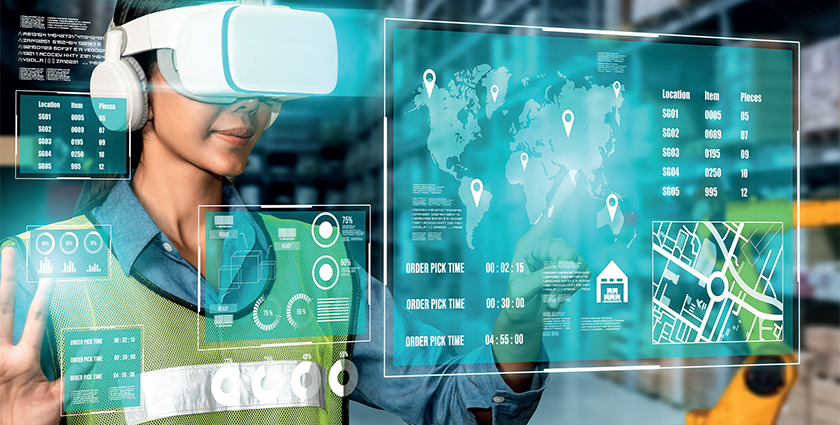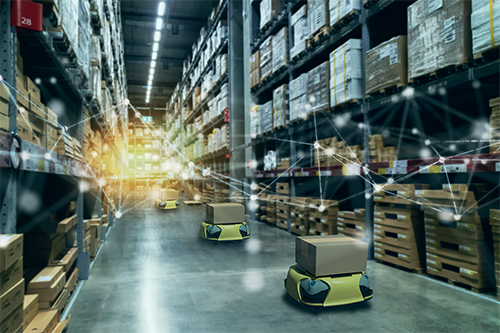
The perfect mix
It’s difficult to define what the warehouse of the future will look like. But the unpredictability of the last couple of years has highlighted that for businesses to survive, regardless of their geographic location, size, or sector, they must be flexible, adaptable, scalable, and able to cope with change.
The business and economic landscapes of the future will continue to present us with unpredictable challenges. The successful warehouse of the future must be underpinned by agile and resilient technology solutions that allow warehouse operations to embrace the change that such challenges drive, enabling them to pivot their business models as necessary.
One size does not fit all
There will not be one dominant technology. For the warehouse environment, a one size fits all is not an option, despite what some vendors may say. Warehouse operations of different sizes, and serving different vertical sectors have – and will always have – specific requirements to ensure that goods, whatever they may be, flow in and out of the warehouse as smoothly and efficiently as possible.
Future warehouse operation leaders will face the same barrage of information, hype, and noise around the latest and greatest technology solutions as those of today face.
Learn from history
We should learn from history. How many technologies have promised to deliver the very thing that every warehouse operation needs but have gone through the all-too-familiar technology adoption life cycle? Moving from the hype to deployment by industry innovators, through to deployment by the early adopters, and then perhaps the early majority, but never quite making it to something close to mass adoption.
Voice technology never quite reached its anticipated heights across warehouse environments. Deploying voice was historically expensive and complex and, while some companies deployed large transformational voice solutions, many simply could not afford the cost, risk or disruption.
RFID was feted to become the identification tool to end all identification tools. Although successful in some verticals, particularly in retail, it has not taken over as the ubiquitous solution many foresaw.
Today, automation and robotics are presented as delivering everything the warehouse needs. There is no doubt that automation will increase across the industry over the coming years, but how many companies will have a 24/7/365 dark warehouse in the future and use a drone for cycle counting? Not many. So, these technologies will join those that do not become ubiquitous.
However, there will still be a place for them, or their latest iterations, within the warehouse of the future.
Because what will become ubiquitous in the warehouse of the future is the deployment of a mixture of technologies, all working in harmony, to meet the requirements of specific tasks in different areas of the warehouse. Technology that augments the work of warehouse employees, not necessarily replacing them
Mix of technologies to meet a changing landscape
Deploying a mixture of technologies, without a huge investment in any one, will allow future warehouse operations to easily scale up or scale down and deploy new technologies to meet a changing landscape.
This mixture of technologies will include real-time location tracking, temperature monitoring, humidity tracking and solutions for monitoring impacts and drops, ensuring goods can be tracked and monitored through their entire lifetime in the warehouse.
This will see a demand for sensors and tags, in turn driving a surge in demand for sensor and tag readers.
These sensors and tags will enable broader deployment of automation. Full automation will be easier for simple workflows and individually trackable/transportable items, but human decision- making will still be needed for more complex small items and mixed-pallet environments. In this scenario, autonomous mobile robots (AMR), will assist employees with their workflows.
Voice technologies, and other hands-free technologies, including heads-up displays, will be deployed in appropriate areas of the warehouse in combination with sensors and beacons to help guide the workflows.
Technologies working together
All these technologies will need to work seamlessly together to make the workflows as efficient and accurate as possible, and to make the worker experience as good as it can be.
The challenge will be to make all these technologies work well together. The sensor and tag data will need to be fed into the warehouse management system (WMS), the WMS instructions will need to be sent to AMRs, data from beacons will need to feed into the workflows to direct workers effectively and intuitive hands-free workflows will need to work with all these technologies.
Bringing together different technologies can be a nightmare, as it usually involves complex integration into an existing WMS. The cost associated with this integration frequently stops companies from evolving.
Plug and play
The warehouse of the future will move towards a ‘plug and play’ approach, which allows the easy adoption of new technologies enabling warehouses to evolve with freedom and flexibility.
Cost effective software solutions are available today that drive this evolution by providing translation capabilities, enabling the WMS to seamlessly talk to the technology it needs to. All without the need for code to be written, no need for scripting to take place, and with no need to rip and replace the WMS.
These solutions allow warehouse operations to take a transitional approach to the introduction of new technologies, by enabling small step changes. New technologies can be monitored to ensure they are performing as required.
Changes and tweaks can be made to ensure each technology is optimized to deliver as expected, or quickly dismissed as not the right choice, before costly investment has been made in further deployment.
Smart warehouse operations are already successfully bringing together different technologies. The secret to this success now, and in the future, is to work with an implementation partner who understands the business challenges driving the move to deploy new technologies. Ideally, a partner who offers a technology platform that enables new technologies to seamlessly talk to the WMS and each other.
A mix of the right technologies will enable the warehouse of the future to be both agile and resilient and make this evolution as simple as plug and play.

Padraig Regan, Chief Product Officer, StayLinked, a market leader in terminal emulation (TE) solutions for the supply chain industry, is headquartered in California, US with an innovation centre in Oxfordshire, UK.
www.staylinked.com